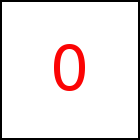hV Library Method
Short Description: Set Height Vector of Object
Signature: t.hV (x,y,z) or (p)
Group: Shape
Class: transition Class
Defines the height vector of the animated object. Default is (0,h,0)
whereby h is the height of the associated HTML element.
The height vector gives the displacement from the top left corner to
the bottom left corner. Alternatively (p) can be specified as a Position Specification
that will be resolved into coordinates. p then specifies to bottom left corner
and the height vector is evaluated by subtracting the current top left point
from p.
Sample HTML
element with id="s10"
By enlarging or reducing the vector, the height of the (animated image of the) element
can be changed.
By turning the height and the width vector the object can be rotated.
The examples below reduce the length of the height vector and so reduce the height
of the transition.
taccgl.actor('s10') . hV (0, 100, 0) . duration(5). start(); | RUN |
taccgl.actor('s10') . hV ({ry:0.5}) . duration(5). start(); | RUN |
var t= taccgl.actor('s10'); t. hV (0,t.h/2,0) . duration(5). start(); | RUN |
The examples below add use a non-zero x or z value to the vector and so produce a parallelogram.
taccgl.actor('s10') . hV (100, 200, 0) . duration(5). start(); | RUN |
taccgl.actor('s10') . hV ({rx:0.5,ry:1}) . duration(5). start(); | RUN |
var t= taccgl.actor('s10'); t. hV (t.h/2,t.h,0) . duration(5). start(); | RUN |
var t= taccgl.actor('s10'); t. hV (0,t.h,-t.h) . duration(5). start(); | RUN |
var t= taccgl.actor('s10'); t. hV (0,0,-t.h) . duration(5). start(); | RUN |
WebGL™ is a trademark of the Khronos Group Inc.
| 






